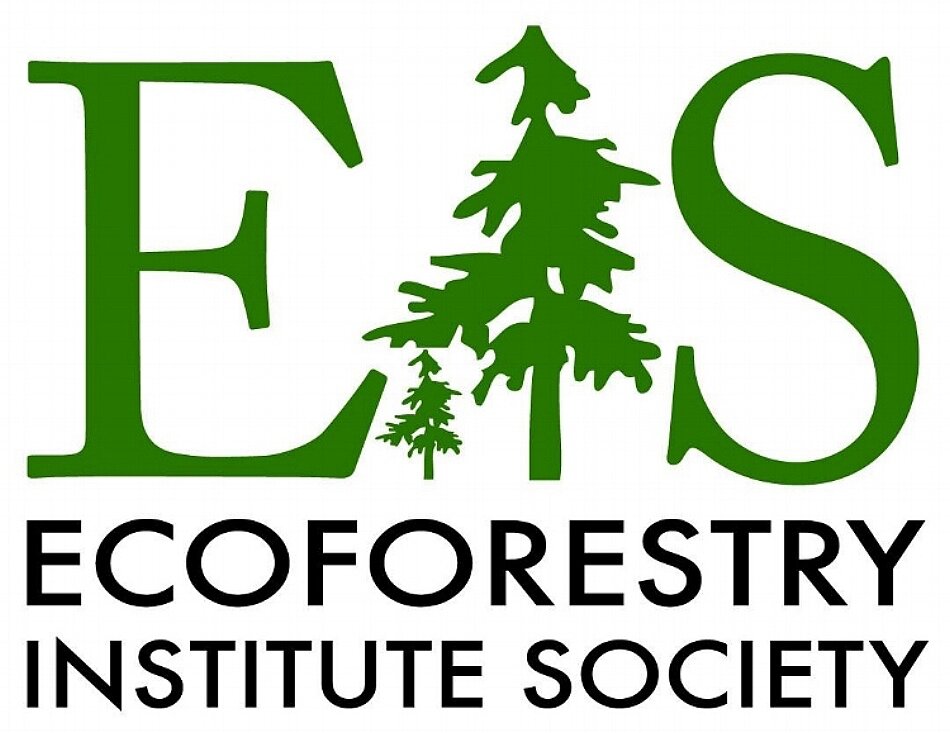The Case for Ecoforestry, Or: Why Ecoforestry?
Forests are the lungs of the Earth. We humans use forests in so many ways, but we have damaged and destroyed forests in many parts of the world in the name of short-term financial profit. Ecoforestry is a kind of forestry that gives priority to sustainability and ecosystem integrity. Ecoforesters work with natural processes and harvest at rates that maintain or restore overall biomass and biodiversity of the forest.
By and large forestry practices around the world are not and have not been sustainable, because they were not and are not ecologically sustainable. Examples of unsustainable practices are:
High rates of cut, which have depleted forest landscapes of Old Growth and mature forests plus associated biodiversity. They have also vastly diminished amounts of dead wood as well as of soil carbon in all forest age classes.
Plantations with fewer tree species than would be natural, favouring those with higher (current) commercial value and eliminating or excluding others (i.e. deciduous trees).
Harvesting in ways that do not sufficiently mimic regionally typical natural disturbance events (i.e. fire, wind throw), with too few dead or live trees being retained.
Harvesting with too little regard for the health of soils or streams in order to keep logging costs down.
Using herbicides or mechanical brushing to suppress deciduous trees and undergrowth. Herbicides can also poison wildlife among many other detrimental effects.
Broadcast fertilization which can change soil ecology and harm associated wetland ecosystems among other impacts.
Planting of trees having much less genetic diversity than would occur with natural regeneration.
As a consequence,
We have been threatening and, in some cases, causing drastic declines and even extinction for an immense number of native species (aka biodiversity loss).
We have caused forest health to deteriorate as the web of forest life has been simplified and altered.
Climate change has been accelerated as the amount of carbon stored in forests has hugely declined compared to natural levels. Additionally, younger forests are less effective in moderating the climate than older forests.
Forest fires have become more destructive as natural fire breaks (namely Old Growth and deciduous forests) are lacking.
Landscape hydrology has deteriorated with the reduction of the extent of Old Growth, mature forests and decaying wood and as a result there are more frequent and more extreme droughts and flooding.
Future generations (and contemporary ones) have diminished economic opportunities in forest harvesting, value-added manufacturing, tourism, fishing and recreation.
Most forests are in major need of ecological restoration, which presents a multigenerational challenge.
Human health suffers from loss of recreational potential in forests, loss of climate moderation, loss of natural air and water filtration, loss of pharmaceutical opportunities due to biodiversity loss, and impacts from increased smoke inhalation.
Economic costs to communities have greatly increased (flooding, fires, droughts, loss of economic opportunities).
Indigenous Peoples, on whose traditional territories much of these unsustainable forestry practices have been and are being carried out, have been severely impacted by the damage to their homelands.
What we need to counteract these problems are:
Forests which resemble natural forests in terms of tree species composition, structure, age (classes), canopy, abundance of snags and of dead wood on the ground, with a high diversity of flora, fungi and fauna.
A close to natural forest age class distribution on the landscape level (i.e. with a much greater proportion of mature forests and Old Growth forests in Coastal BC and the BC Interior Wet Belt); this will require a substantial reduction in timber harvest for a long time, but timber quality and value will improve.
An abundance of pioneer species (including Alder, Dogwood, Willow, Cottonwood, Bitter Cherry, Arbutus, Birch, Aspen …) and natural regeneration during an extended period following harvesting.
Silviculture systems which produce similar forest structure and composition as natural disturbance processes would create.
… and this is what Ecoforestry stands for. Ecoforestry is forest management with recognition that intact, healthy forests and future generations matter.
EIS Definitions of Ecoforestry:
Ecoforestry is a forest management practice that maintains or restores natural ecosystem richness, complexity, and resiliency, while providing for ecologically appropriate levels of harvest.
“Ecoforestry” means a forest planning and management system that directs human activities in such a way that natural ecosystem integrity, its composition, structure and function, including biodiversity, is maintained at all spatial and temporal scales and in accordance with natural disturbance patterns.
